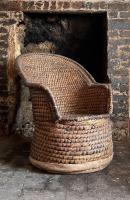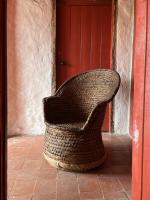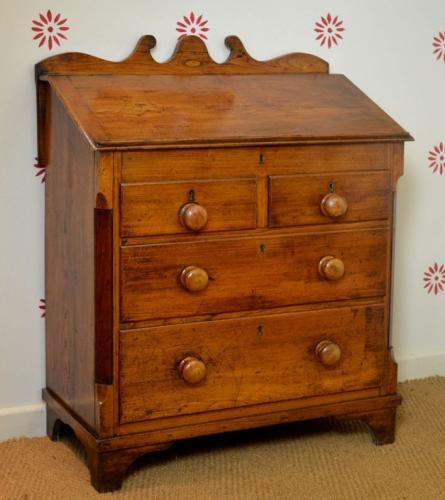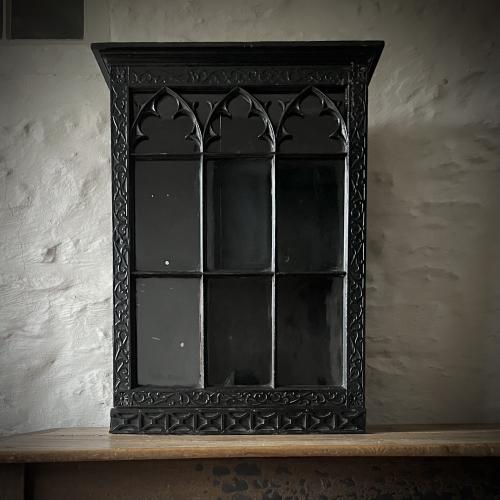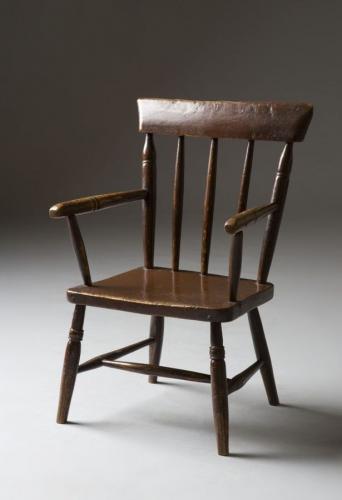
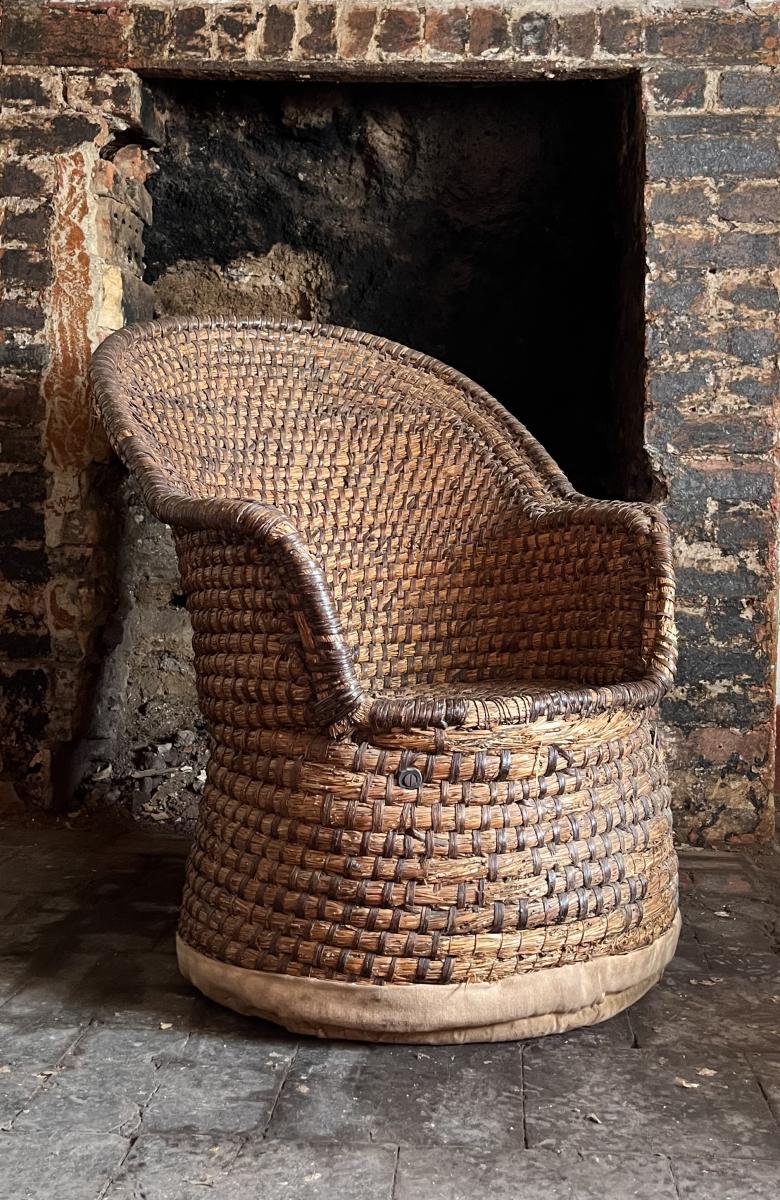
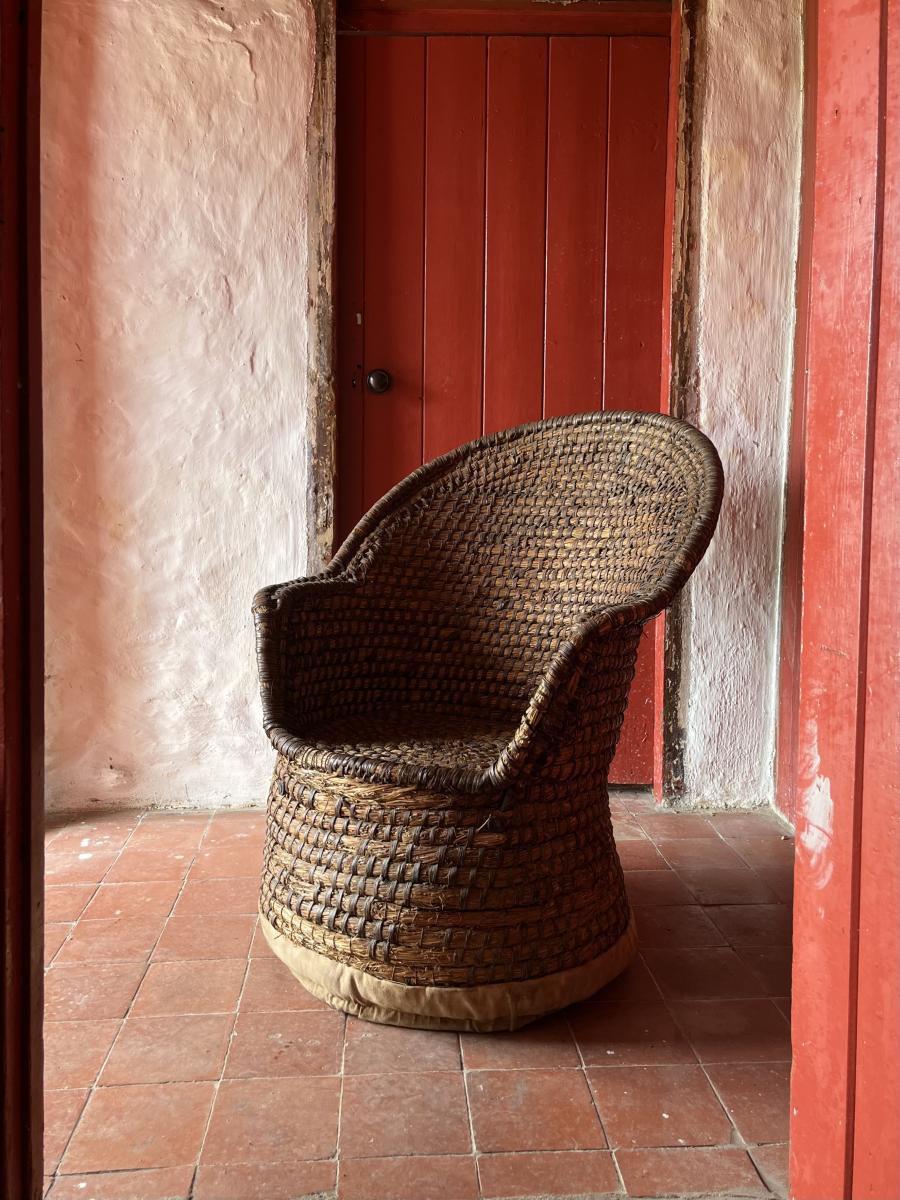
This object is eligible for a Certificate of BADA Provenance
The BADA Standard
- Since 1918, BADA has been the leading association for the antiques and fine art trade
- Members are elected for their knowledge, integrity and quality of stock
- Our clients are protected by BADA’s code of conduct
- Our dealers’ membership is reviewed and renewed annually
- Bada.org is a non-profit site: clients deal directly with members and they pay no hidden fees
Welsh straw lip-work chair.
A rare 19th century Welsh lipwork arm chair. Made from coiled wheat straw and bound together by strips of bramble, with wooden under frame.
Cardiganshire, West Wales, 19th century.
Coiled basketry of a specified type made of straw-rope (lip) was made in certain districts… It was used for a variety of purposes – beehives, seed-lips, corn measures, clothes baskets, trays and chairs. From The Guide to the Collection of Welsh Bygones by Iorwerth C Peate, published by the National Museum of Wales (1929)
Lippwork – A basketry technique, whereby thick straw ropes (of wheat or barley) are bound into shape using thin strips of peeled bark (holly, bramble, etc) or string, in the production of chairs, bee-hives, void eras and other baskets. The name derives from a ‘seed-lipp’,the basket carried by farmers carrying out the broadcast method of sowing seed. From ‘Names for Things – a description of HouseholdStuff, Furniture and Interiors 1500-1700 By Victor Chinnery. Oblong 2016.
Seeding by hand has already been mentioned,and an important craft in many parts of Wales was the making of straw seed lips for carrying seed corn to the fields. In the past a great variety of straw objects for farm and domestic use were made of straw, bound into rolls with bramble strips and coiled into a receptacle. This category of work is known as ‘lipwork. Throughout Western Europe the craft of lipwork was widespread and its history may be traced back to prehistoric times.
The principal raw material required to make lipwork baskets is wheat straw, which has to be threshed and not bruised in any way. The craftsman experiences great difficulty today in obtaining the correct quality of straw,for not only has wheat-growing declined very greatly in mid Cardiganshire,but the fact that the lip worker insists on using winter-sown wheat of the Hen Gymro variety has aggravated the problem of supply even further. Winter wheat is considered much harder and of a better colour than the more common spring-sown variety. To make matters worse, the advent of modern reaping machinery has meant that it has become very difficult to find unbruised raw material. Ideally, the wheat crop should be cut with a scythe or hook, if the straw is to be of use to the lip worker.
To make a straw basket, Benjamin Evans (maker) must also have a quantity of bramble for binding the straw rolls. These have to be selected with great care, for if the bramble has too many prickles and side-shoots it is not suitable for the craftsman’s needs. The best type of bramble grows in sheltered positions under trees in forests and plantations, and the craftsman has to walk miles from his hillside home to the valleys in search of suitable raw materials. Hedgerow bramble is almost useless for lip making, for it has too many side=shoots and is much weaker than forest-grown varieties. The bramble must be winter cut, when there is no sap between the bark and the core.
Before the bramble can be used for weaving a basket,it has to be prepared very throughly with a sharp penknife. The prickles are removed with a few deft strokes, but in doing this great care has to be taken not to damage the bark, or it will be completely useless for the craftsman’s needs. Each bramble stalk has to be split into two sections, the craftsman depending on eyesight and many years’ practice to accomplish this difficult task. This is extremely important, for if the bramble ties are not parallel, the look of the finished basket will be destroyed. The pith is removed by pressing a knife blade against the brand drawing it back sharply with the line of growth. It is important that all the pith be removed, or the tying material will not be as pliant as the craftsman wishes, and of course its presence would spoil the appearance of the finished basket.
The tools required for the work are few and simple. All that is required are a sharp penknife, an awl and a section of cow-horn for standardising the diameter of the rolls. Tradition has dictated that the one awls, similar to those used by osier basket makers, are too hard, tend to fracture the delicate wheat stalks. Wooden awls, on the other hand,tend to break to easily if they are sharpened to a thin point. One particular type of bone suits the craftsman’s needs perfectly: it need not be sharpened or pointed in any way; it is thin,straight and strong enough and it is solid bone,without any marrow.
In the past, the lip worker was as vital to the rural community as the blacksmith or carpenter. He made animal-feeding baskets and seed lips; he made bushel measures and bee skeps, baskets for storing feathers and grain, while in many districts he even made armchairs….From Life and Tradition in Rural Wales by J Geraint Jenkins. Published by J.M.Dent & sons 1976.
Dimensions
71cm wide x 61cm deep x 91.4cm highThe BADA Standard
- Since 1918, BADA has been the leading association for the antiques and fine art trade
- Members are elected for their knowledge, integrity and quality of stock
- Our clients are protected by BADA’s code of conduct
- Our dealers’ membership is reviewed and renewed annually
- Bada.org is a non-profit site: clients deal directly with members and they pay no hidden fees


